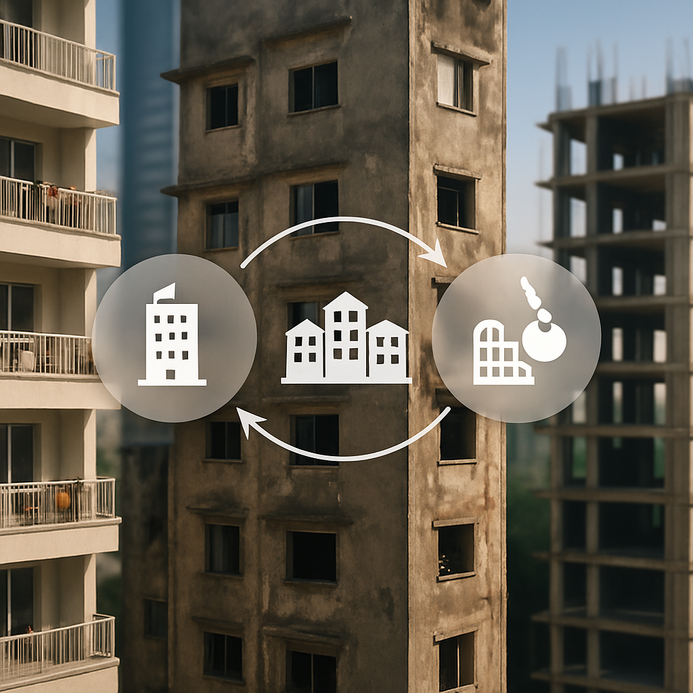How to Save Tax on Your Second Home Loan Using an EMI Calculator?
Introduction to Second Home Loans and Tax Benefits
So, you’re thinking about a second home? Smart move! In India, owning another property can bring not just joy but also some nice financial perks. The buzz around home loans is growing, and it’s not hard to see why. More people are diving into real estate, whether to snag income from rentals or to carve out a cozy getaway. What’s a bigger deal? The tax deductions, especially ones tied to Section 24 of the Income Tax Act, can really lighten the load.
Now, taxes on home loans can be kinda a headache, but knowing how to play the deduction game can ease that stress. Under Section 24, you can knock off interest payments for your second house.
But wait, it gets better. You can also score deductions on principal repayments, courtesy of Section 80C. The cap here is INR 1.5 lakh per year. That’s right, just for paying the principal part of your home loan!
These deductions? They really stack up. They make owning that second property feel less like a burden and more like a manageable deal. Plus, an EMI calculator can help you figure out those monthly payments. Say you take a loan for INR 50 lakh at a 7% interest rate over 20 years. Your EMI hits around INR 38,800. A home loan EMI calculator can turbo-charge your budgeting process.
Here’s a quick peek at your potential deductions:
| Deduction Type | Maximum Deduction Amount | Applicable Section |
| Home Loan Interest | INR 2 lakh | Section 24 |
| Principal Repayment | INR 1.5 lakh | Section 80C |
Being clued up on these benefits is vital for smart financial choices. Want to dive deeper? Check out this guide on using an EMI calculator effectively. And if you’re curious about rental income taxes, take a look at this article. Understanding second home loans? It can seriously level up your investment strategies.
Understanding the Tax Deductions Under Section 24
Alright, let’s talk about Section 24 of the Income Tax Act. This one’s got some hefty tax benefits for homeowners with second home loans. If you’ve got a property, knowing how to deduct those interest payments can work wonders on your taxes.
Eligibility Criteria
Wanna snag those deductions? Keep these criteria in mind:
- The loan’s gotta be for buying, building, or sprucing up a residential property.
- For self-occupied homes, no income should flow in, and if it’s rented, that’s a different game.
- You can claim a max of ₹2 lakh for self-occupied homes, while rented properties? No cap here.
Now for an easy reference, check this table:
| Criteria | Self-Occupied Property | Rented Property |
| Maximum Deduction | ₹2 lakh | No limit |
| Requirement | Not rented out | Must be rented |
| Benefit | Interest paid on loan | Full interest paid on loan |
Claiming the Deduction
Ready to file? Make sure you’ve got your documentation on lock, like:
- Loan approval letters.
- Interest payment receipts.
- Property tax slips.
- Rent agreements (if it’s rented).
File your returns right, and you’ll soak up those benefits like a sponge. An EMI calculator for home loan can help project your payments and save on taxes too.
For more nifty insights on maximizing deductions, check out this guide on EMI calculators and this comprehensive EMI calculator.
Understanding Section 24 not only helps you tackle taxes but also sharpens your financial decisions about your properties.
Next up, Section 80C of the Income Tax Act, it’s a game changer for homeowners looking to snag deductions on principal repayments. This section lets you claim a max of ₹1.5 lakh each financial year for the principal you’ve paid off on your home loans. It’s available for loans taken to buy or build a home.
Quick breakdown on Section 80C impact for your tax filing:
| Description | Amount (in INR) |
| Maximum Deduction | ₹1,50,000 |
| Applicable For | Principal Repayment |
| Eligible Loans | Home Loans |
| Assessment Year (AY) | Current Financial Year |
To qualify, remember: the loan must be in your name, and selling the property within five years of possession will disqualify the deduction. Don’t forget to keep proof, like bank statements or a repayment certificate.
Ever thought about using a home loan EMI calculator? It’s pretty handy for figuring out payments based on your terms and whatnot. This little tool can also help map out your tax benefits. If you need to know eligibility criteria for home loans, this Home Loan Eligibility Calculator might come in handy.
By balancing repayment strategies with tax deductions, homeowners can stretch those financial benefits even further. And those EMI calculators? They’ll keep you stress-free with repayments.
Differentiating Between Self-Occupied and Rented Properties
Let’s dive into the nitty-gritty of owning a second home: self-occupied vs. rented properties. These two types are totally different when it comes to tax deductions and the rules you have to follow.
Self-Occupied Properties
When you live in your second home, your main deduction comes from Section 24(b) of the Income Tax Act, where you can claim up to INR 2 lakh on home loan interest. Plus, if you’re renovating or building, those costs could also qualify for deductions.
Here’s a handy table on self-occupied property deductions:
| Aspect | Details |
|---|---|
| Interest Deduction | Up to INR 2 lakh under Section 24(b) |
| Principal Repayment | Eligible under Section 80C up to INR 1.5 lakh |
For extra help with figuring out deductions, an EMI calculator is a good buddy to have when planning your finances.
Rented Properties
Now, if your second property is a rental, the rules shift. You can deduct all the interest on your home loans, you heard that right, without any upper limit! Plus, you can also consider any rent received or some notional rent depending on whether it’s occupied or not.
Here’s how deductions stack up for rental properties:
| Aspect | Details |
|---|---|
| Interest Deduction | No upper limit on interest paid |
| Standard Deduction | 30% of net annual value |
For precise calculations, an EMI calculator for home loans is a solid tool.
In summary, knowing the difference between self-occupied and rented properties can totally change your financial game. It clears up tax burdens, making your life a bit easier. Curious about taxes on rental income? Don’t miss our article on how to save tax on rental income.
Using an EMI Calculator for Effective Financial Planning
An EMI calculator for home loans? Absolutely essential if you’re keen on managing your finances, especially when it comes to a second home. This nifty tool shows your monthly EMI (Equated Monthly Installment) and helps you grasp your budget better. Input your loan amount, interest rate, and tenure, then bam! You’ve got your monthly payment sorted.
Want a quick example? For a ₹50 lakh home loan at an 8% interest rate spread over 20 years, your monthly EMI hits around ₹42,200.
| Loan Amount | Interest Rate | Tenure | Monthly EMI |
| ₹50,00,000 | 8% | 20 years | ₹42,200 |
Using this EMI calculator for home loans helps you plan. You can play with repayment strategies, maybe pick a shorter tenure or crank up your down payment to lessen total interest. Prepaying parts of your loan can also lower your EMI or tenure.
Don’t forget to factor in tax benefits. Under Section 80C, you get up to ₹1.5 lakh off on principal repayment. And under Section 24(b), you can rebate up to ₹2 lakh on interest! Using an EMI calculator can really help you see how those deductions hit your monthly spend.
Understanding your home loan EMIs is crucial for solid financial planning. It keeps you from overspending and gives you the info you need for smart refinancing decisions or bigger payments later. Wanna manage home loans better? Check out our articles on home loan prepayment strategies and improving your CIBIL score.
FAQ
1. What is a second home loan?
A second home loan is a financial product designed for individuals wishing to purchase a second property, whether for personal use or as an investment.
2. What are the tax benefits of a second home loan?
Under Section 24, you can claim interest deductions up to ₹2 lakh per year for self-occupied properties and there is no cap for rented properties. Additionally, Section 80C allows for a maximum deduction of ₹1.5 lakh for principal repayments.
3. How can I differentiate between self-occupied and rented properties in terms of tax deductions?
Self-occupied properties have a limit of ₹2 lakh for interest deductions, whereas rented properties can deduct the entire interest amount without a cap.
4. How does using an EMI calculator help with financial planning?
An EMI calculator helps homeowners estimate their monthly payments based on loan amount, interest rate, and tenure, aiding in better budgeting and financial decisions.













